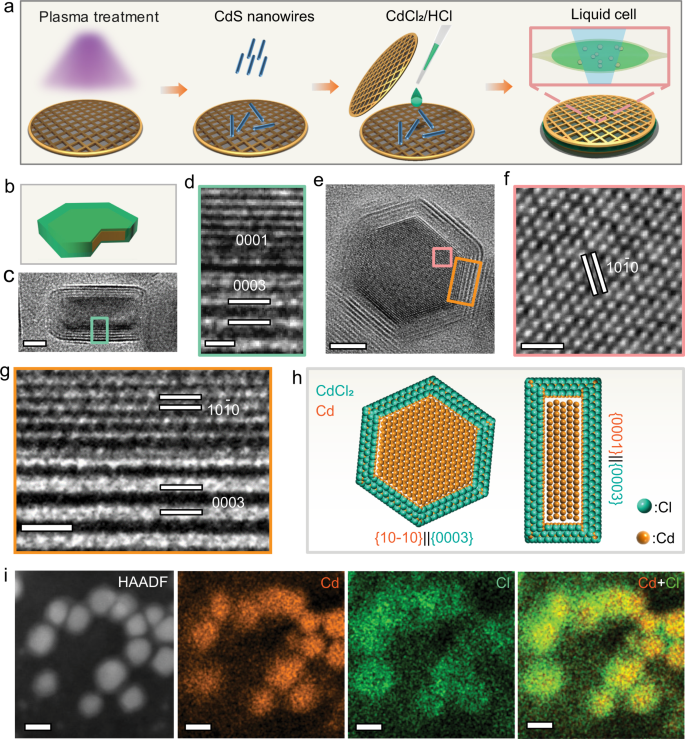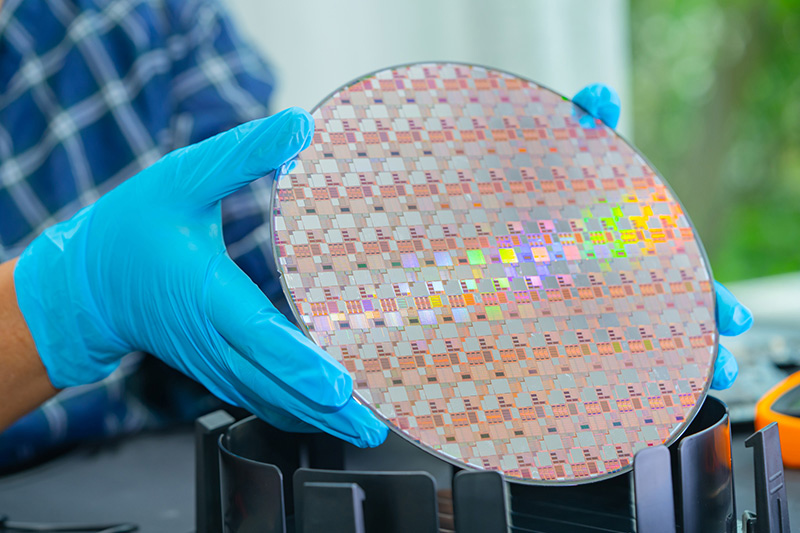バークレーの研究者が、溶液中で熟成するナノ粒子を記録的な高解像度で観測。 Berkeley Lab scientists observe nanoparticles ripening in solution at record-breaking resolution
2022-07-26 ローレンスバークレー国立研究所(LBNL)
この研究では、硫化カドミウム(CdS)ナノ粒子と塩化カドミウム(CdCl2)および塩化水素(HCl)の溶液を、特注の液体試料ホルダーに懸濁させた。 この溶液に電子ビームを照射すると、カドミウム原子がコア、塩化カドミウムがシェルを形成する、平らな六角形のディスクのようなCd-CdCl2コアシェルナノ粒子(CSNP)が生成される。
高分解能液体細胞透過電子顕微鏡(LC-TEM)という技術を用いて、溶液中でCd-CdCl2 CSNPが熟成する様子を原子レベルの大きさでリアルタイムにLC-TEMビデオに収めた。
ある重要な実験では、小さなCd-CdCl2コアシェルナノ粒子が大きなCd-CdCl2 CSNPと合体して、より大きなCd-CdCl2 CSNPになる様子がLC-TEMビデオで確認された。しかし、その成長の方向は、大きさの違いではなく、最初に大きくなったCSNPのシェルにあるクラック欠陥によって導かれていた。
<関連情報>
- https://newscenter.lbl.gov/2022/07/26/how-do-nanoparticles-grow/
- https://www.nature.com/articles/s41467-022-29847-8
欠陥が介在するコアシェル型ナノ構造体の熟成 Defect-mediated ripening of core-shell nanostructures
Qiubo Zhang,Xinxing Peng,Yifan Nie,Qi Zheng,Junyi Shangguan,Chao Zhu,Karen C. Bustillo,Peter Ercius,Linwang Wang,David T. Limmer & Haimei Zheng
Nature Communications Published:25 April 2022
DOI:https://doi.org/10.1038/s41467-022-29847-8

Abstract
Understanding nanostructure ripening mechanisms is desirable for gaining insight on the growth and potential applications of nanoscale materials. However, the atomic pathways of nanostructure ripening in solution have rarely been observed directly. Here, we report defect-mediated ripening of Cd-CdCl2 core-shell nanoparticles (CSN) revealed by in-situ atomic resolution imaging with liquid cell transmission electron microscopy. We find that ripening is initiated by dissolution of the nanoparticle with an incomplete CdCl2 shell, and that the areas of the Cd core that are exposed to the solution are etched first. The growth of the other nanoparticles is achieved by generating crack defects in the shell, followed by ion diffusion through the cracks. Subsequent healing of crack defects leads to a highly crystalline CSN. The formation and annihilation of crack defects in the CdCl2 shell, accompanied by disordering and crystallization of the shell structure, mediate the ripening of Cd-CdCl2 CSN in the solution.



